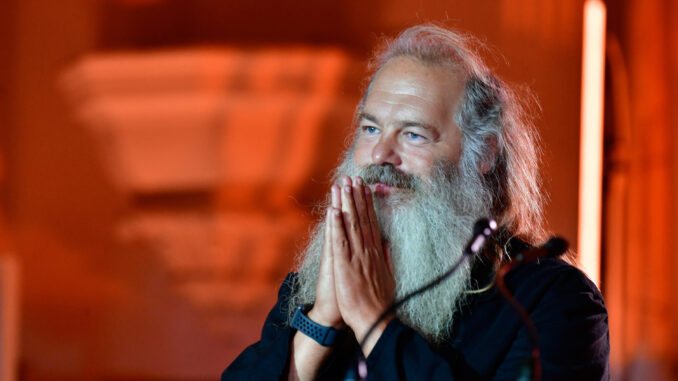
To plenty of music fans, word from Rick Rubin is close to work from God. As a record label boss and producer, he’s worked with a lengthy list of some of the world’s biggest artists and has played a hand in creating plenty of world-changing albums. But while he’s a master of modern music, he’s still a fierce fan and student of the musical past, as the impact of artists like Neil Young and The Beatles isn’t lost on him.

In particular, Rubin’s approach is less of a strictly technical view of music production and more broader, more vocational, or even spiritual, to creativity and vision. “In terms of priority, inspiration comes first. You come next. The audience comes last,” he said, placing the vision ahead of the artist and the artist ahead of their listeners when it comes to making great art.
He sees that hierarchy realised in the classic albums he loves, including one Neil Young record that he demands more praise and attention for. While Harvest is most commonly talked about as an example of Young’s talent, Rubin’s own favourite album from the artist is After The Gold Rush, his 1970 album.
In terms of Rubin’s ranking of inspiration, artist and audience, After The Gold Rush is a perfect example of the glory of sticking to that. First came the inspiration in the form of a screenplay of the same name. Written by Dean Stockwell and passed along to Young by Dennis Hopper, the script is about an apocalyptic ecological disaster that washes away the Topanga Canyon hippie community, dealing with the feelings of fear, love and grief. After reading the script, a fire was lit in Young and the album was fully written three weeks later.
Then comes the artist as Young refused to falter from his idea, even if it meant presenting a different side to the artist that his fans were used to in Crosby, Stills, Nash and Young or on his previous solo album. But the music was all in service to the story, using his instruments as another tool to help the big picture.
To Rubin, it’s that unified and sharp vision, wrapped in a relatively simple package, that makes the album so incredible. “I like the natural mood of this one,” Rubin said, as the record feels like little more than Young, his ideas and a band. But the tale of the album reminds him of another all-time favourite record of his.
“Like The Beatles’ White Album, it has almost a documentary feel. It feels like it’s capturing a moment in time, and not trying to be perfect,” he said. The White Album certainly isn’t a perfect record, as the lengthy tracklist reflected the band’s in-fighting and refusal to compromise on which songs should be included. However, the result, with all its various sounds and styles, became a documentary snapshot of where the group were at. Much like Young’s album, capturing this one distinct inspiration and a moment in his life, the Beatles’ album is certainly the story of that time frame.
“It’s not trying to be glossy, or pretty. It has a real, soulful truth in it,” Rubin continued. As Young grapples with this disaster story, as well as stories of heartbreak and loss, After The Gold Rush is an emotional record that feels aptly rough around the edges. It’s as jagged as the tale it holds and made with the right kind of simple, raw grit to get it across. For Rubin, it’s a prime example of letting vision lead, letting artists do what they want and casting everything off as unimportant.

Leave a Reply